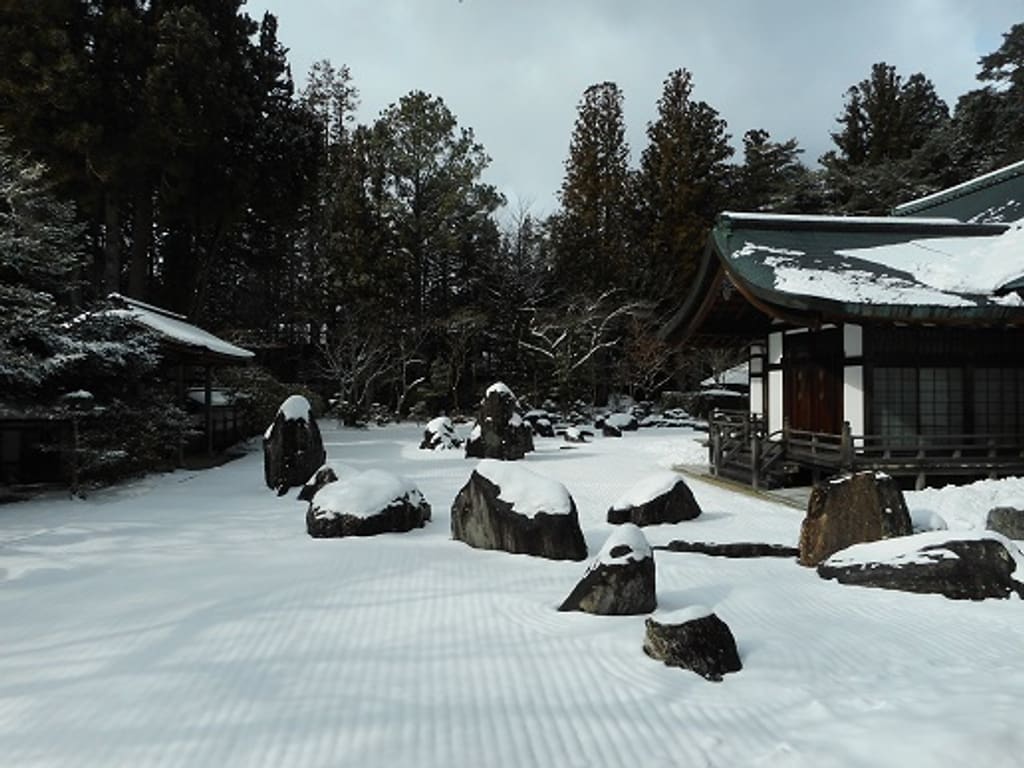Contents
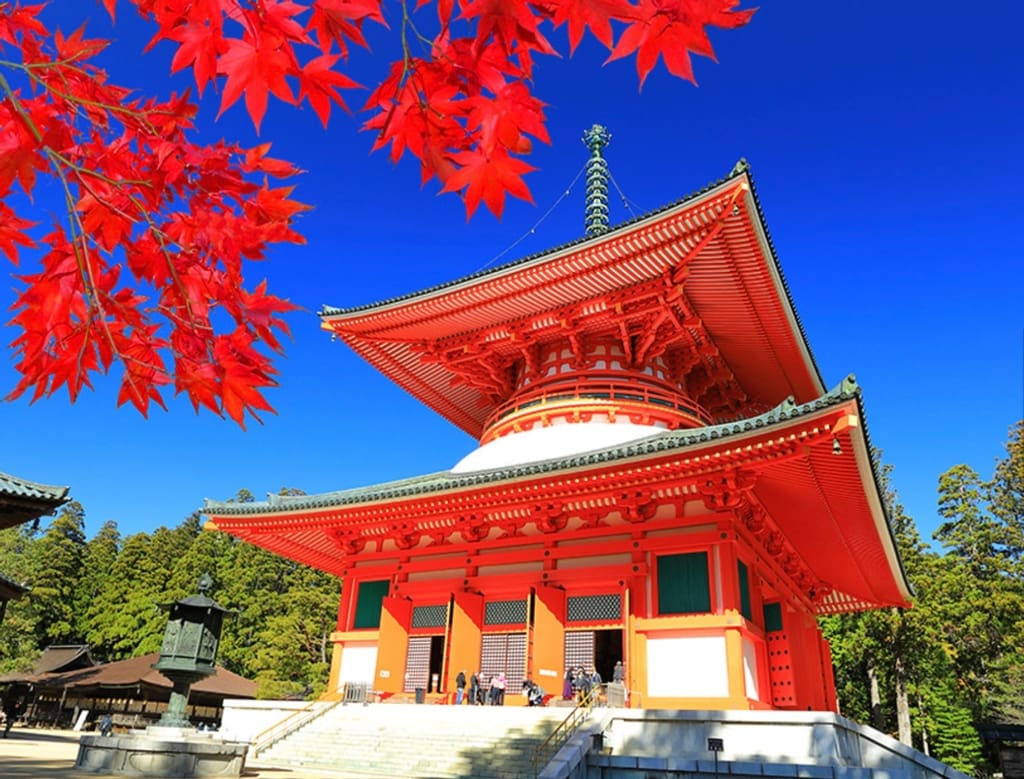
Koyasan, or Mount Koya, isn’t just another stop on a tourist route. it’s a journey into Japan’s spiritual core. Nestled in Wakayama Prefecture, this sacred mountain is the heart of Shingon Buddhism, founded over 1,200 years ago by Kobo Daishi (also known as Kukai). When you step into Koyasan, you’re not just entering a town, you’re crossing into a realm where time seems to pause, and peace flows through the pine-lined pathways like mountain mist.
Unlike bustling Kyoto or neon-lit Osaka, Koyasan invites introspection. The solemn chants of monks, the haunting beauty of lantern-lit cemeteries, and the intricate woodwork of ancient temples all whisper stories of devotion and quiet endurance. For history buffs, Zen practitioners, photographers, or travelers just craving a break from city chaos, this mountaintop town is the ultimate sanctuary.
And here’s the good news Koyasan Day Trip Guide. you don’t need to spend the night (unless you want to). A day trip to Koyasan can deliver profound spiritual immersion, rich cultural insights, and stunning nature. But to truly make the most of it, planning is key. This ultimate guide covers everything from how to get there and what to eat to hidden spots and etiquette tips so you can experience Koyasan in all its quiet glory.
You might wonder can you really tap into the centuries of Buddhist culture in just one day? The answer is yes, especially if you know where to go and what to look for. Koyasan is designed for pilgrims, and it’s compact enough to navigate on foot. Within a few hours, you can walk through sacred temple grounds. You can meditate under ancient cedars. You can even witness monks performing age-old rituals.
A day trip is perfect for those short on time but long on curiosity. It allows you to immerse in a completely different atmosphere without committing to an overnight stay (though staying at a temple is an experience in itself!).
Timing your trip to Koyasan can make all the difference. Each season brings a unique charm, and your experience can vary wildly depending on when you go.
If you love cherry blossoms, spring is your golden ticket. The trees around Kongobuji Temple and along the main streets burst into bloom, creating a pastel-hued paradise. The weather is mild, the skies are clear, and the town comes alive with quiet festivity.
Koyasan sits about 800 meters above sea level, which means it’s cooler than the surrounding cities. While the summer in Osaka can be stifling, Koyasan offers fresh air and a green canopy. It’s a great escape but do bring bug spray and a raincoat, as the rainy season can hit in June.
Arguably the best time to visit. The entire town transforms into a canvas of fiery red, orange, and gold. The maple trees near Danjo Garan and Okunoin are especially spectacular. Early mornings and late afternoons offer stunning light for photos.
Want a more intimate and mystical experience? Visit in winter. Snow blankets the temples, and the silence is almost otherworldly. Some temples may close parts of their grounds, but the fewer crowds and serene atmosphere make it worth it. Just bundle up, it gets chilly!
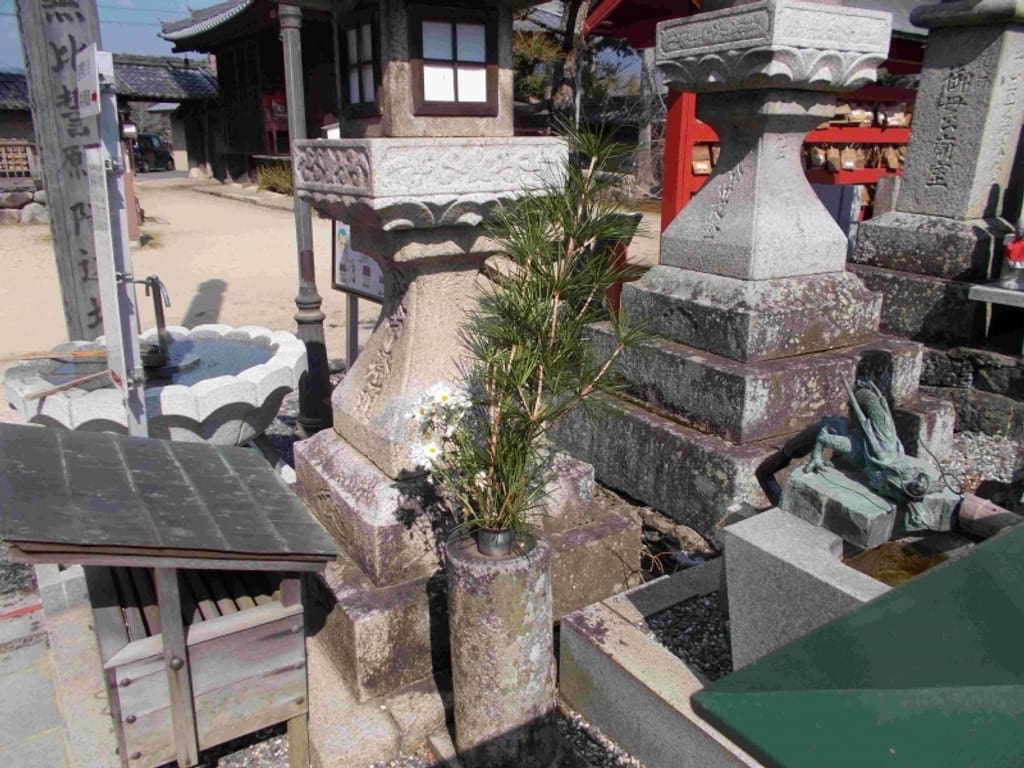
Getting to Koyasan might seem complex at first, but it’s actually a smooth ride once you know the steps. Most travelers start from either Osaka or Kyoto, with Osaka being closer.

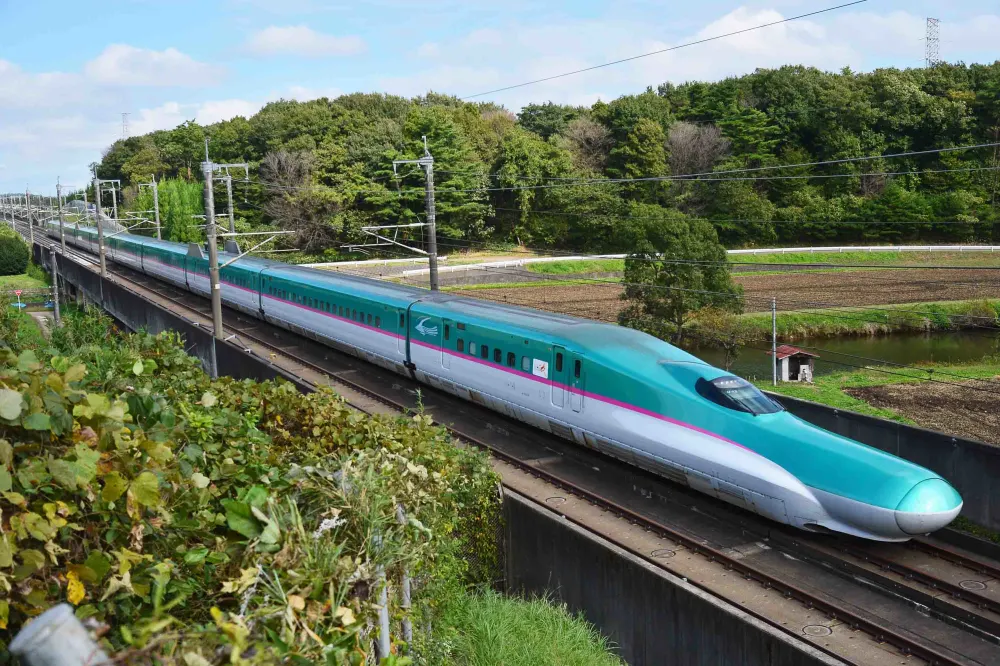
Pro Tip: Consider getting the Koyasan World Heritage Ticket if you’re coming from Osaka. It covers round-trip transportation and bus fares around Koyasan. Plus, it offers discounts at certain attractions.
Travel Time Breakdown:
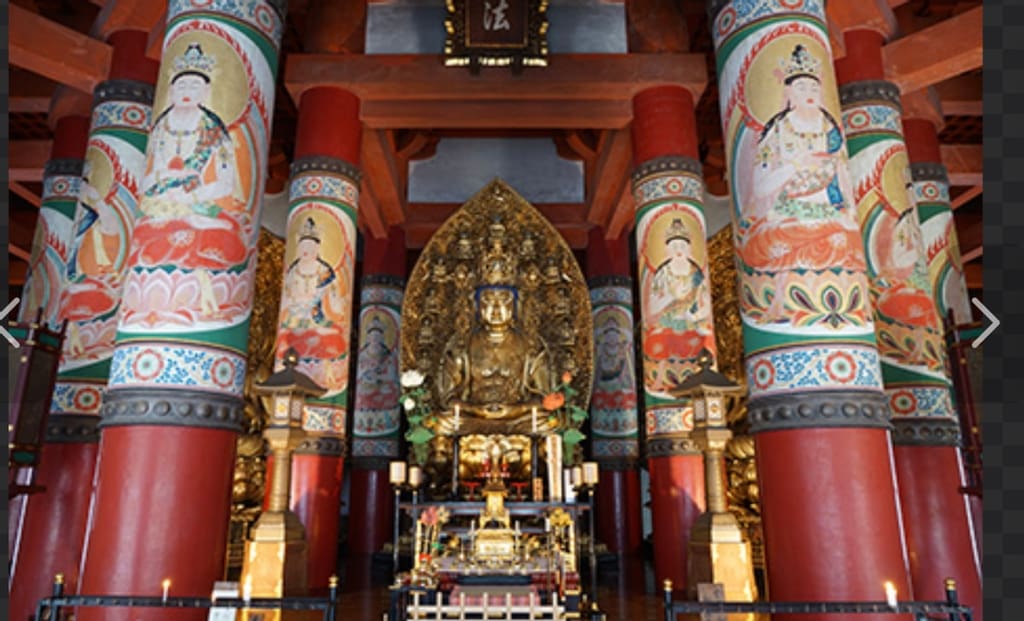
As you step off the cable car and ride through the winding forest road toward the temple town, you’ll quickly sense a shift. The air is cooler, cleaner, and filled with the scent of cedar. Unlike other tourist-heavy spots, Koyasan maintains a gentle pace. Even popular attractions rarely feel overcrowded.
The town is small, but packed with things to see. Most attractions are within walking distance from each other, though the local bus makes hopping around quicker if you’re short on time.
Coming up next, we’ll dive into the top attractions to visit on your Koyasan day trip and how to make every moment count.
Even if you only have one day in Koyasan, you can still experience its most spiritually and historically significant landmarks. Each of these spots tells a part of the story of this mountaintop sanctuary. Make sure your camera is charged and your mind open, this is where the magic of Koyasan truly unfolds.

Arguably the most famous site in Koyasan, Okunoin Cemetery is not just Japan’s largest graveyard. it’s a deeply moving spiritual experience. Stretching over two kilometers with more than 200,000 tombstones nestled beneath towering cedar trees, this place is both haunting and peaceful.
What makes it special is that it’s not just a resting place, it’s an active pilgrimage route. At the end of the path lies the mausoleum of Kobo Daishi, where followers believe he is in eternal meditation. This belief attracts millions of pilgrims who walk the path in silence, leaving offerings and prayers.
Pro Tip: Photography is not allowed past Gobyobashi Bridge, so take your pictures before that and respect the sacredness beyond.

Kongobuji isn’t just another temple, it’s the head temple of Shingon Buddhism. This place is where religious decisions and teachings are made. Built in 1593, it’s packed with historical significance, stunning interiors, and a profound sense of serenity.
Take your time here. The atmosphere encourages reflection and the architecture inspires awe. You might even catch a monk offering guidance or storytelling.
The Danjo Garan complex is the symbolic heart of Koyasan. This is where Kobo Daishi began building his monastic center, and the area reflects the origins of Koyasan’s spiritual presence. It’s more than just a cluster of temples, it’s a sacred space that radiates energy and history.
Stroll slowly through this area, and let your eyes soak in the blend of Shingon symbolism, natural surroundings, and architectural marvels.
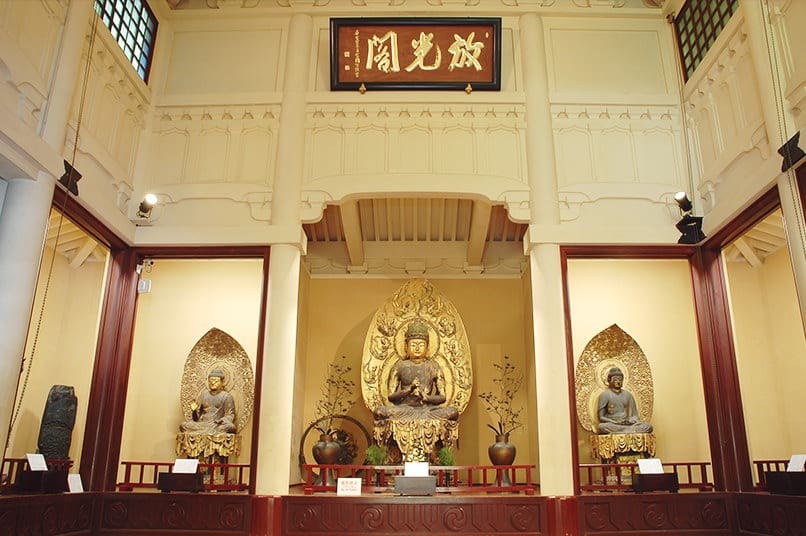
For history enthusiasts, the Reihokan Museum is a treasure trove. It houses some of Japan’s most valuable Buddhist art, calligraphy, and scriptures. It’s also one of the best ways to understand Shingon Buddhism visually and intellectually.
Though small, this museum is beautifully curated and offers English explanations. It’s a great place to cool down, slow the pace, and appreciate the craftsmanship of religious art.
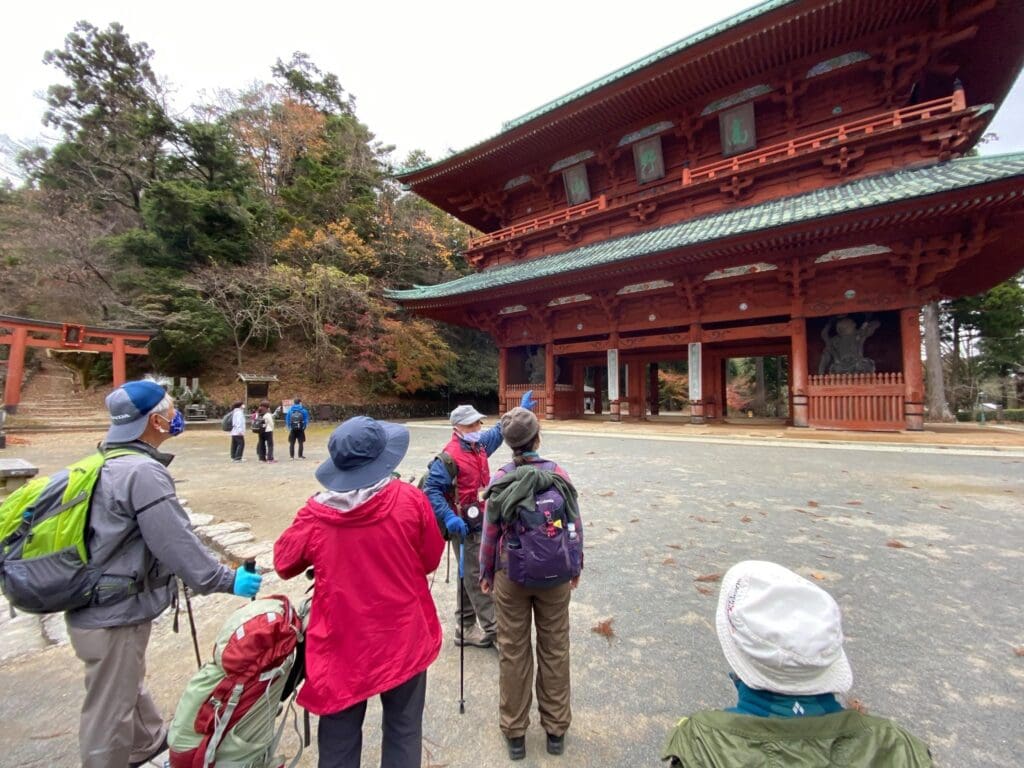
Standing tall at the western entrance of Koyasan is Daimon Gate, a striking red gate that marks the official entry to the sacred area. Originally built to ward off evil spirits, the gate is flanked by massive guardian statues that seem ready to leap into action.
Most visitors arrive from the opposite direction and may miss this structure. But if you have time, take a short bus or walk to this grand entrance. It’s particularly photogenic during sunset or when the mist rolls in.
This spot also connects to various hiking trails. This makes it ideal if you have a bit of energy left toward the end of your day trip.
You can’t talk about Koyasan without mentioning Shojin Ryori, the traditional vegetarian cuisine developed by Buddhist monks. Designed to nourish both body and spirit, this food is a culinary experience you don’t want to skip.
Even on a day trip, you can try this sacred meal at local eateries or temples open to the public.
While Koyasan is primarily vegetarian in nature, there are a few spots offering more general Japanese cuisine. Just don’t expect fast food chains. You’re here to slow down and eat mindfully.

Coming up next: immerse in temple culture, shop for spiritual souvenirs, and explore Koyasan’s quiet forest trails.
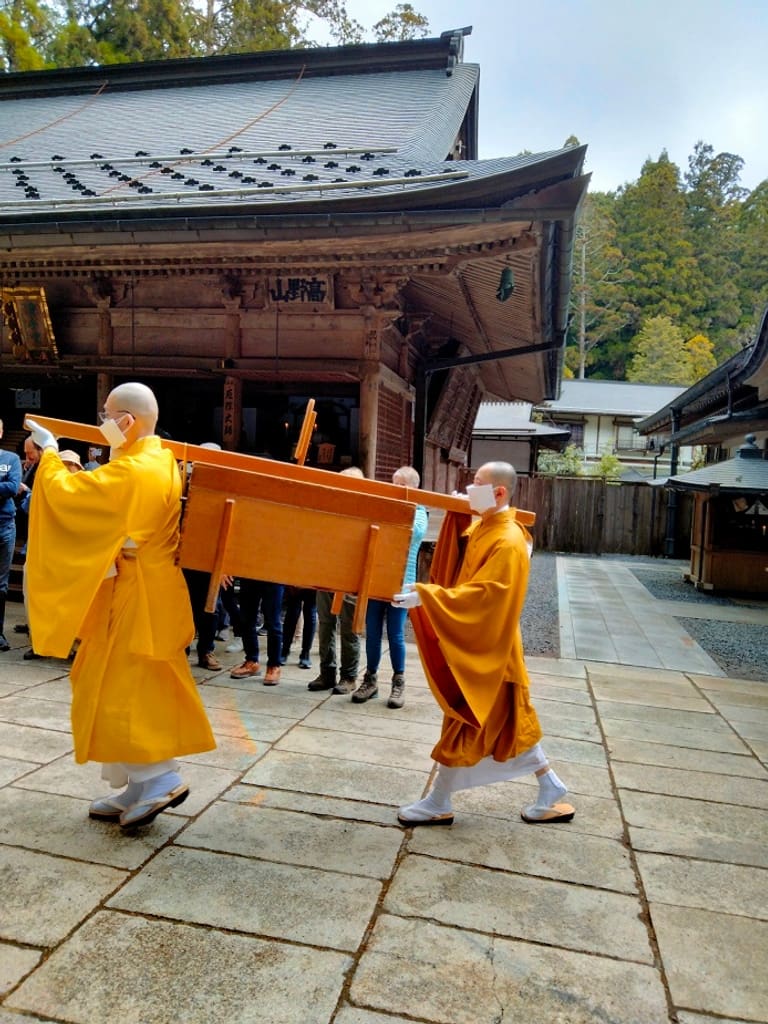
You don’t need to stay overnight in a temple to get a feel for Koyasan’s deeply rooted spiritual life. Even in just a few hours, you can engage with Buddhist culture in authentic and memorable ways.
Many temples offer zazen (seated meditation) classes for visitors. These aren’t touristy sideshows, they’re taught by actual monks, often in serene temple halls filled with incense and natural light. Even a short 30-minute session can leave you feeling grounded and refreshed.
Popular temples like Ekoin and Kongosanmai-in may offer drop-in sessions or allow guests to sit quietly during the daily routines. You’ll be guided on posture, breathing, and focus. perfect even for first-timers.
If you arrive early enough or are lingering into the afternoon, you may witness a Buddhist prayer ceremony. Monks chant sutras, ring bells, and light incense in beautifully choreographed rituals. While you don’t need to understand every word, the rhythm and sound create a meditative ambiance that’s hard to forget.
Even on a day trip, these experiences are available if you time your visit right. Many temples open their gates early, around 8 AM, and some welcome respectful observers.
Each temple in Koyasan has its own unique features, zen gardens, ancient wooden gates, lotus ponds, and towering halls filled with statues of Bodhisattvas and protective deities. Walk slowly, look carefully, and absorb the quiet energy that permeates the grounds.
Engaging with these living temples isn’t about rushing through a checklist. it’s about being present, quiet, and open to the energy around you.
Before heading back to the bustle of Osaka or Kyoto, don’t forget to explore Koyasan’s charming souvenir shops. These aren’t your typical trinket stands. Here, you’ll find items steeped in spiritual meaning, crafted by monks, artisans, and local families.
While these items make great gifts, they also serve as quiet reminders of your Koyasan journey, a way to carry a bit of peace home with you.
Koyasan isn’t just temples and prayers, it’s also a lush forest haven filled with hidden paths, scenic viewpoints, and whispering trees that seem to hum with history.
Whether you’re walking the path through Okunoin or strolling the mossy lanes near Danjo Garan, nature plays a big part in the Koyasan experience. The air is pure, the forest is alive with birdsong, and the atmosphere invites deep calm.
Nature and spirituality blend seamlessly in Koyasan. Even if you’re not meditating in a temple, walking through these silent forests might just clear your mind in a way city parks never could.
Koyasan offers endless photo opportunities but it’s not just about snapping the most Instagrammable shot. It’s about capturing the serenity, mystery, and ancient presence that defines this mountaintop town.
Want truly memorable photos? Don’t just shoot pause. Observe. Feel. Then frame your shot with the same mindfulness that defines Koyasan itself.
Koyasan isn’t your average sightseeing destination. it’s a living, breathing religious community. The monks who live here, and the pilgrims who visit, treat this place with the utmost reverence. As a visitor, it’s essential to do the same.
Here’s a quick breakdown of cultural dos and don’ts to help you blend in respectfully.
Following this basic etiquette will not only prevent any awkward moments, but it will also deepen your appreciation of Koyasan’s sacred atmosphere. You’re not just a tourist here—you’re a guest.
Let’s be honest one day is never enough to experience a place with over a millennium of history. But if that’s all you’ve got, it can still be deeply fulfilling.
Here’s how to decide if you need more time:
A day trip is ideal for curious travelers. An overnight stay is better for those looking to deeply immerse themselves in Japanese spirituality.
Whichever you choose, Koyasan rewards your presence with peace, clarity, and a slower way of being.
A day trip to Koyasan is more than just a scenic detour it’s a soul-refreshing journey into Japan’s spiritual heart. You may come for the majestic temples. Perhaps you are drawn by the silent forest paths. You might seek the humbling aura of Okunoin. No matter your reason, you’ll leave lighter, quieter, and even transformed.
It’s rare to find a place that delivers so much beauty, history, and peace in such a short visit. And it’s even rarer to find yourself reflecting on life while sipping matcha under a 1,000-year-old cedar tree.
So, if you’re craving something more than photo ops, something deeper and quieter. Koyasan is calling.

A well-paced day trip of 6–8 hours is enough to cover major sights, enjoy a temple meal, and even do a short hike. But spiritual travelers might want to spend 2 days for full immersion.
Yes, but plan accordingly. The terrain is walkable but includes hills. Buses run frequently, and many attractions are wheelchair accessible or stroller-friendly with assistance.
Some temples offer short rituals or meditation sessions for day visitors, but full lodging experiences require overnight stays. Check in advance for availability.
Dress modestly long pants, covered shoulders, and comfortable walking shoes. Bring layers, as the mountain weather can be cooler than the cities.
Yes. Most major temples have English signage and brochures. Some even offer English-speaking monks or staff to help you navigate the cultural experience.
